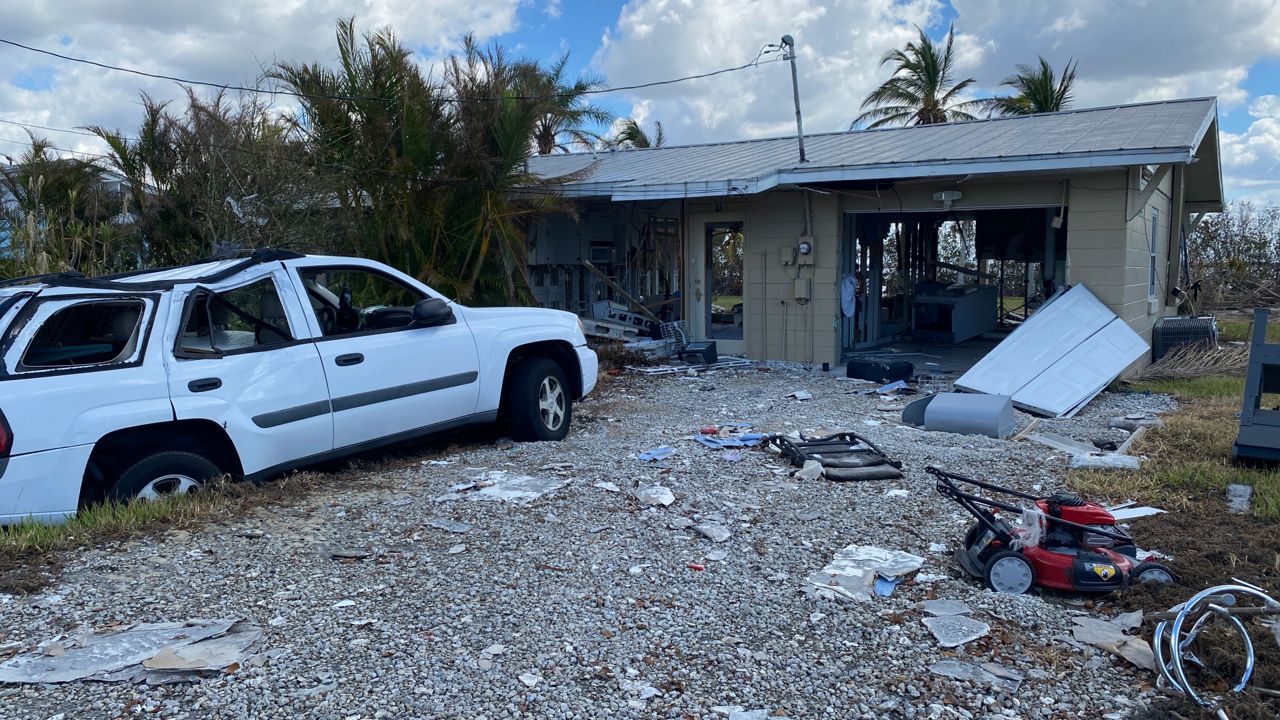The United States saw 18 different weather and climate disasters in 2022 that each resulted in a loss of at least $1 billion, that according to a report released by NOAA’s National Centers for Environmental Information on Tuesday.
The disasters included 11 severe storm events, 3 tropical cyclones, 1 drought, 1 flood, 1 wildfire and 1 historic winter system.
The report, released Tuesday morning, highlights the second consecutive year that the total number of disasters has fallen in the United States. However, despite the fall in the total number of events in 2022, the United States saw its third highest overall cost because of these disasters, totaling more than $165 billion.
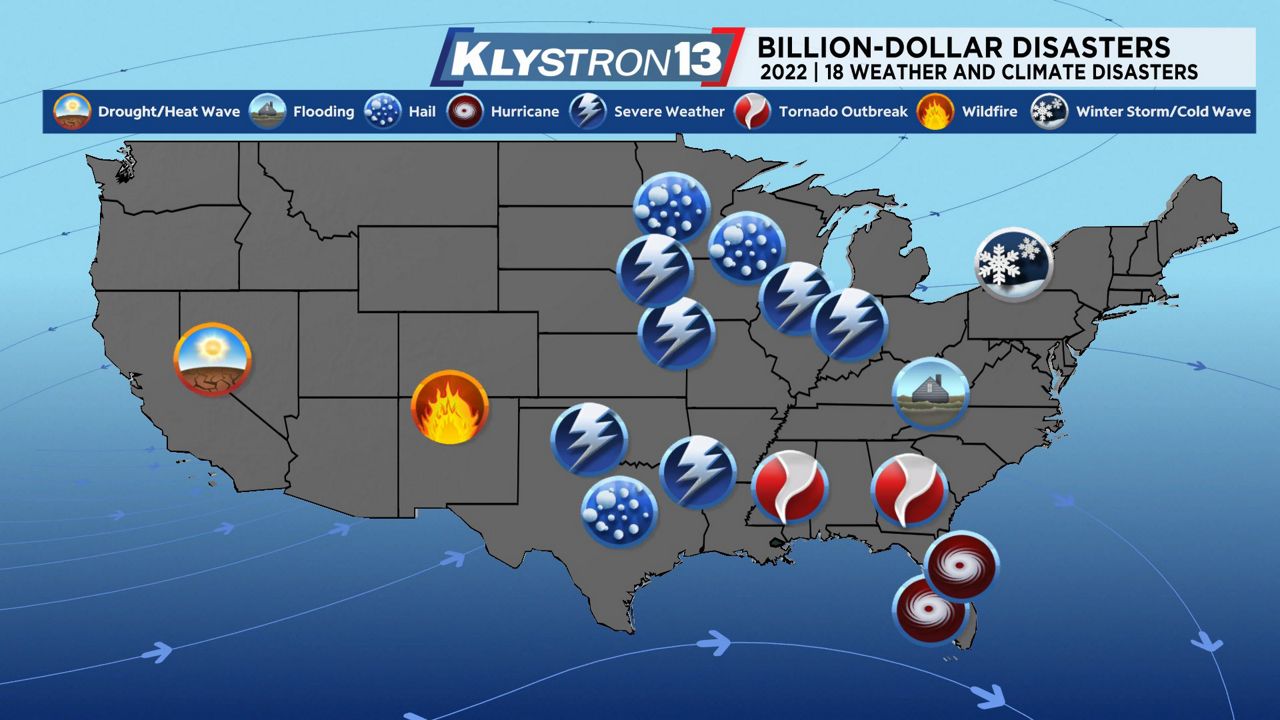
2022 tied the years 2011 and 2017 for the third most disasters on record at 18. Only 2020 and 2021 saw more events, 22 and 20.
A western drought which lasted all year long continues to be one of the single most costly disasters of the year, totalling over $22 billion in damage. The drought resulted in the deaths of 136 people throughout 2022. This weather disaster is still ongoing as we begin in 2023.
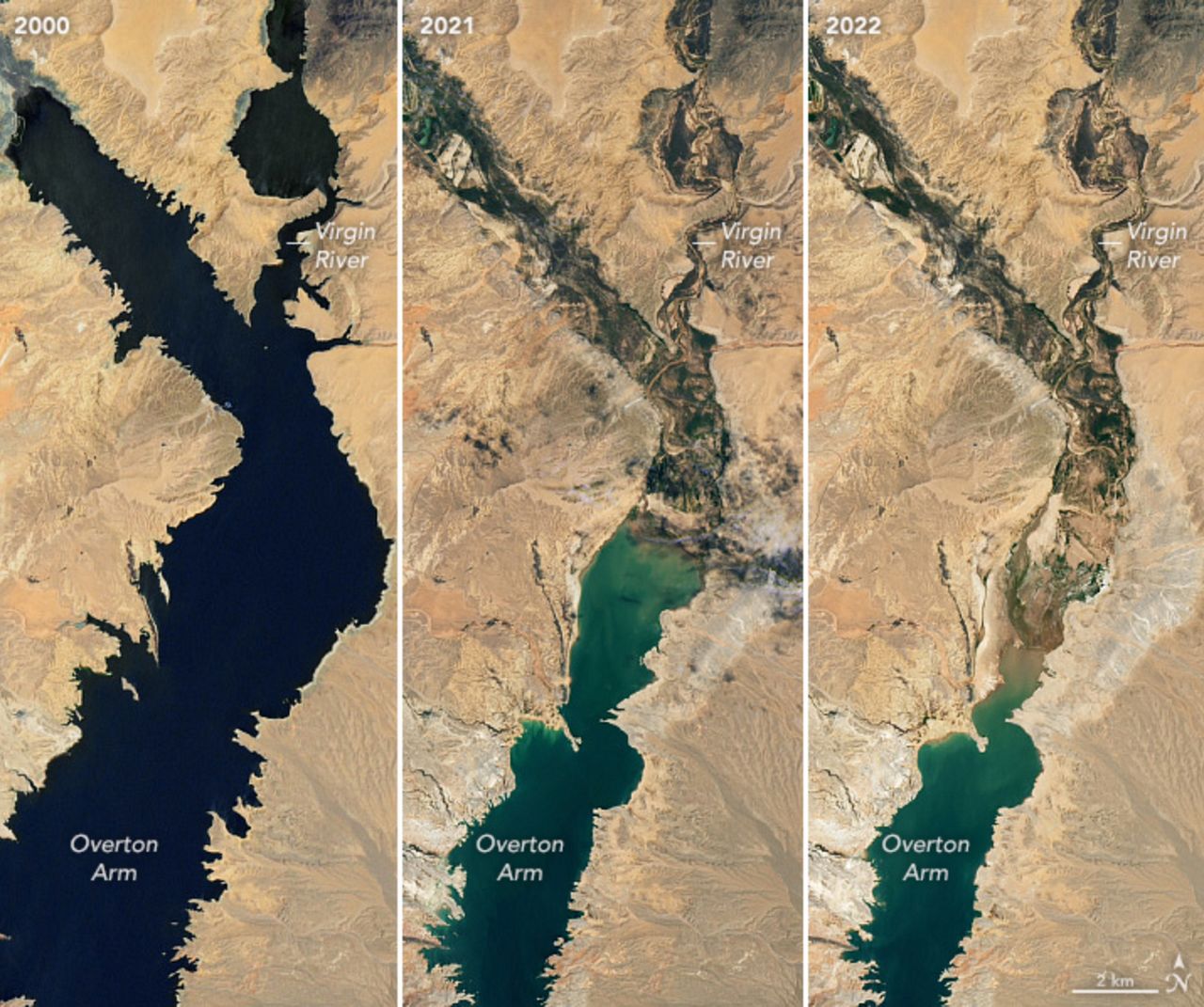
Only one flood event in the U.S. was categorized as a billion dollar event, with estimates reaching $1.5 billion. The historic flooding that swept through Kentucky and Missouri July 26-30 led to 42 deaths and catastrophic damage to the Bluegrass State.
The event resulted in over 600 helicopter water rescues, 24 flash flood warnings and 3 flash flood emergencies. It also saw the North Fork of the Kentucky River reaching major flood stage, setting a record of 43.47 feet.
The southwest saw another historic wildfire season in 2022, once again reaching billion dollar criteria. The fires which raged from Spring through early fall caused an estimated $3.1 billion in damage and resulted in 17 deaths.
2022 saw three tropical cyclone events that each totaled at least $1 billion of damage to the United States. Hurricane Fiona struck first, hitting the island of Puerto Rico on Sept. 18.
Fiona, which made landfall along the southwestern coast of the island near Punta Tocon, resulted in a power outage to the entire island of Puerto Rico. The grid, damaged for days, suffered more than $2 billion in damage by one estimate.
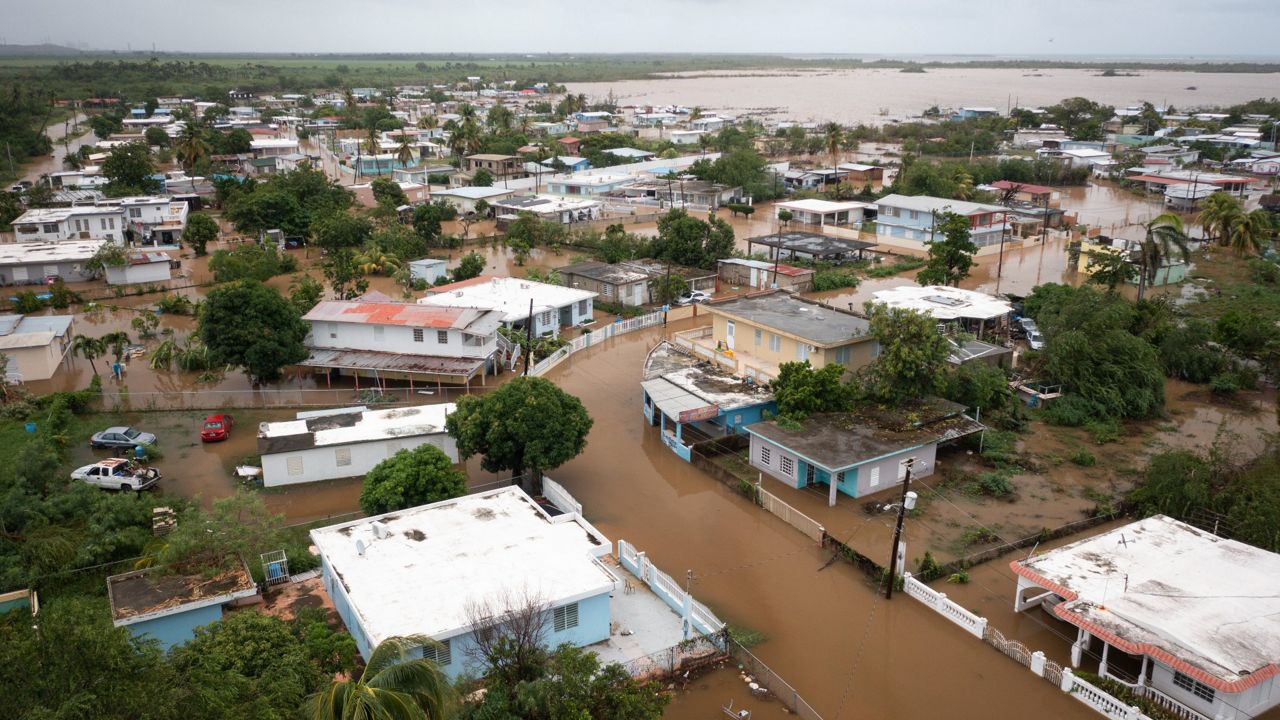
Hurricane Fiona dumped over 30 inches of rainfall near the city of Ponce, while winds gusted as high as 113 mph according to the National Hurricane Center. U.S. President Joe Biden declared the island a state of emergency in the following days.
Hurricane Ian became the most expensive weather disaster of the year, costing the United States over $111 billion in damage. Ian made landfall in southwest Florida on Sept. 28 as a powerful Category 4 hurricane with winds of 150 mph.
It became the first Category 4 hurricane to make landfall in this part of Florida since Hurricane Charley moved through the state in 2004.
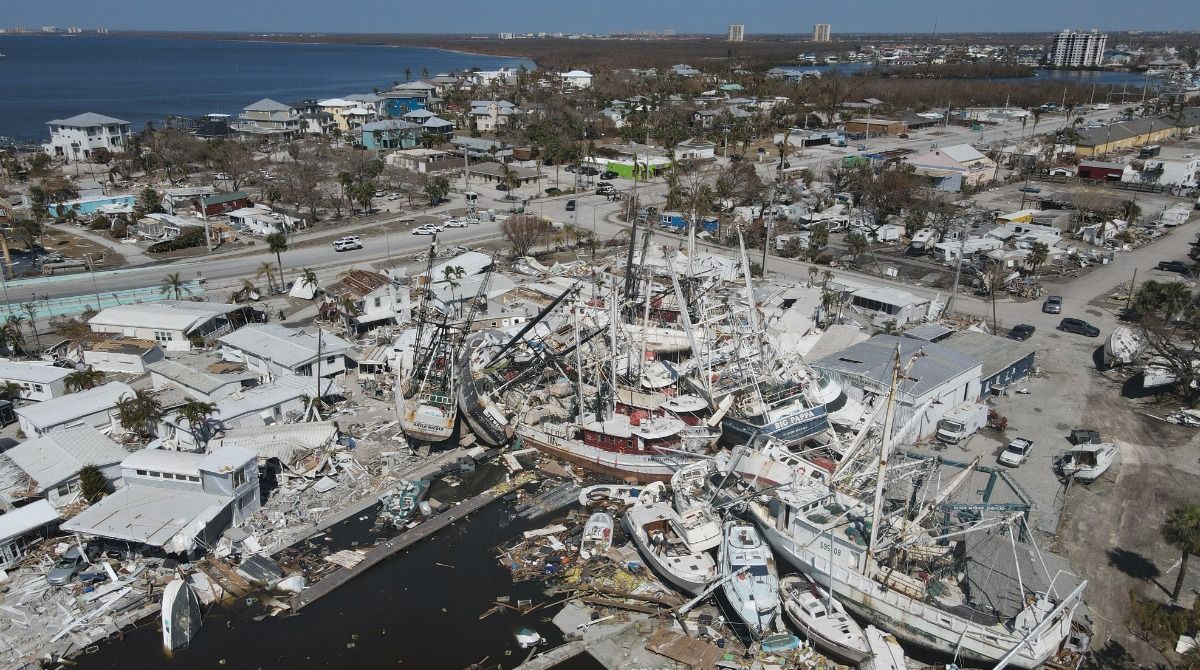
The storm prompted 300,000 evacuations of people from Hillsborough County and the closure of over 55 public school districts. NASA even delayed the launch of Artemis 1, forcing the rocket back to the Vehicle Assembly Building.
An official cyclone report on this storm has not been released by the National Hurricane Center yet, but the highest rainfall estimate was in Ponce Inlet, totaling over 31.5 inches of rainfall throughout the storm event.
Hurricane Nicole rounds out the cyclones totalling over $1 billion in damages, as it made landfall in the Sunshine State just about a month and a half after Ian.
The storm was not as costly or strong as Ian, but did compound damage across communities that were still recovering from the high wind and flooding that Ian brought several weeks earlier.
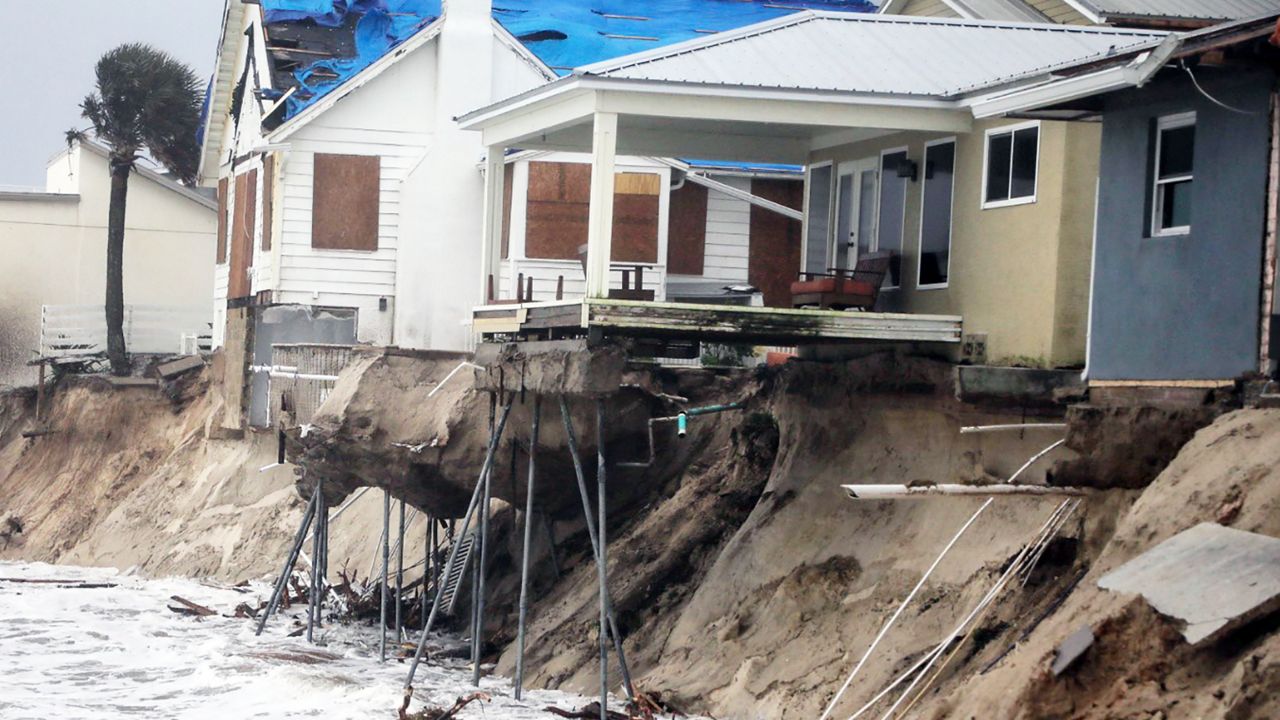
The storm brought significant coastal erosion to the east coast of Florida, leading to several buildings being condemned after the storm passed. A few buildings fell into the Atlantic ocean because of the ground giving way underneath. Nicole became the first hurricane to make landfall in the state of Florida in the month of November since Hurricane Kate in 1985.
In the last days of 2022, the United States saw a historic and unprecedented winter storm that brought bitter cold temperatures to millions of Americans, while those along the Great Lakes found themselves trapped because of significant snowfall amounts.
The storm, which was caused by a historic arctic front moving out of Siberia and across the globe, sent temperature plummeting below zero for millions across the northern and central United States.
At one point, over 200 million Americans were under some sort of winter weather alert. Florida saw wind chills drop into the teens while it left customers from Texas to Maine without power because of the storm.
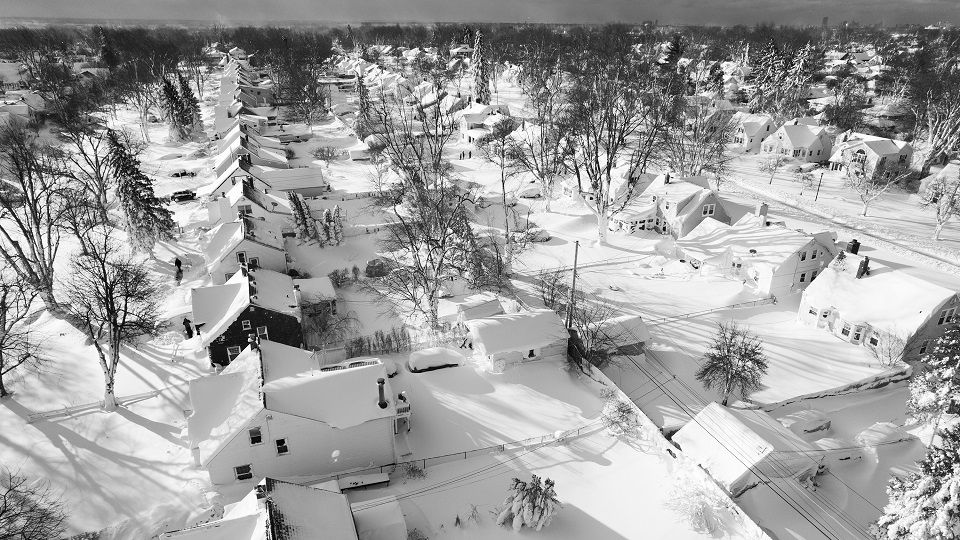
Winds flowing across the Great Lakes started up a historic winter storm, dumping several feet of snow in Buffalo, N.Y. Lake-effect snow brought the city to a halt, trapping thousands of residents at home for several days. The cold snap and winter storm claimed the lives of 87 people.
While damage estimates are still unknown, NOAA’s NCEI office has deemed this a billion dollar disaster. An update on the estimated damage this weather event caused will be issued at a later point in time.
Our team of meteorologists dives deep into the science of weather and breaks down timely weather data and information. To view more weather and climate stories, check out our weather blogs section.



